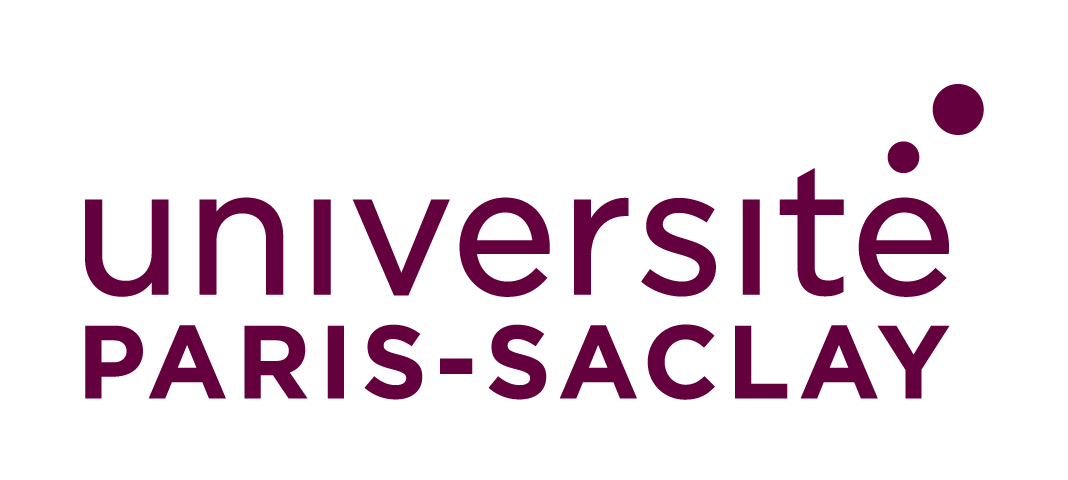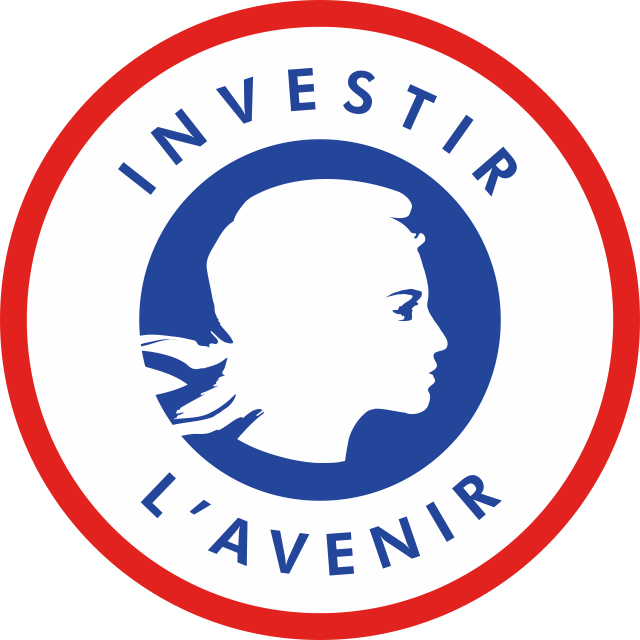2021 Call for Master Grants
Launched in November 2020, this call aimed to support the funding of Master internship grants related to at least one of the three Challenges of the CLand project. At its meeting on January 11, the CLAND training committee selected the following applications:
- Stéphane BAZOT : Plasticité ou adaptation du pommier sauvage au climat ? PlastiPom
- Pauline BUYSSE : Impact des épisodes de chaleur de l'été 2019 sur les flux de carbone et de vapeur d'eau des sites ICOS systèmes en France
- Raja CHAKIR : Usages des sols, climat et stockage du carbone : une analyse sur données européennes
- Pierre-Alain JAYET : Potentiel de production de calories à finalités alimentaire et énergétique du système de production agricole de l'UE, et demande d'eau d'irrigation et d'azote de la part du système en condition de changement climatique
- Marion JOURDAN : Potentialités du maintien et de la croissance du chêne pubescent en France en contexte de changement climatique
- Armelle MAZE : Vignes urbaines et péri-urbaines : dynamiques territoriales et innovations environnementales dans un contexte de transitions agroécologiques
👇 Meet the young scientists who have joined the CLand interns team! 👇
2021 CLand Interns
|
Mr. Massim BENALIThe objective of my internship is to study the links between land use (agriculture, pasture, forest, urban) et carbon storage, The aim is to identify differences in mitigation potential depending on the different land uses of the different spatial scales. The first step is to identify existing EU-wide databases on land use (Corine Land Cover and LUCAS) and carbon storage (MAES and LUCAS soil data). The second step is to conduct descriptive spatial exploratory analysis of existing data (difference in carbon storage for different uses in different climates/regions of Europe). The last step is to study interactions between land use and carbon storage using statistical models. Panel econometrics or spatial econometrics tools would be used depending on used data. |
|
Ms. Marion CARMEAfter 2 years of advanced undergraduate studies in sciences, I specialized in the fields of wood and forestry, engaging in a double MEng at AgroParisTech and ENSTIB (National School of Wood Technologies and Industries). I completed several internships in forestry research (at University College Dublin / Teagasc Research Centre, Alliance Forêt Bois Limousin and UCLouvain / Earth and Life Institute). My master internship, funded by CLAND, is dedicated to the study of maintain and grow potential of Quercus pubescens in France under climate change. In fact, climate change directly affects forest ecosystem processes and associated services. On French territory, managers and Forest Health Department (DSF) have already observed diebacks in French forests. For example, some oaks forests in northern France are already dying. However, these forests are essential in timber construction or furniture production. To meet new challenges due to climate change, managers could favoring alternative species, as more thermophilic oaks (as Quercus pubescens). This internship will allow tackling this point, which constitute a major concern of actors of the territory. To predict potential of Quercus pubescens, we will use two mechanistic models: ForCEEPS (a gap-model Morin et al 2020) and CASTANEA (a process based model, Dufrêne et al 2005). During my internship, we will: work on the spatialization of Quercus pubescens stands potential in France over the 21st century in the context of climate change, using several climate scenarios (1), develop a reflection on the strengths and weaknesses of both used mechanistic models, comparing our results (2). |
|
Mr. Pedro COIMBRAAfter specializing in ecological and territorial development economics and working with research in this field, my interests turned to biosphere-atmosphere interactions to better understand the relationship between climate and land use. This interest made me apply for my current internship on the impact of heat waves on the carbon and water cycles. Under increasing frequency and intensity of climate extremes, there is an urgent need to better understand their effects on ecosystems, particularly on carbon and water cycles. The 2019 European summer heat waves were particularly strong in France, both national and local temperature records were broken. In parallel, France is equipped with 18 sites connected to the European ICOS network (Integrated Carbon Observation System), which allows us to have real-time and high-frequency monitoring of CO2 and water vapor fluxes. Thus, the internship uses this powerful database to reveal the impacts of 2019 heat waves in France by analyzing the evolution of meteorological and carbon/water fluxes at the different sites (1) and the role of water stress and stomatal closure to the net ecosystem exchange (2). To this end, we use modelling for photosynthesis fluxes, comparisons between sites and ecosystems, and for selected sites a longer analysis placing 2019 relative to previous years. The specific conditions of heat waves, associated with low surface turbulence, can pose different limitations to the implemented methods. Finding these limitations is also insightful for future studies. I will conduct the data analyses, writing the report and answering these questions being closely supervised by Pauline Buysse and Benjamin Loubet, and with the help and support of EcoSys and French-ICOS associated researchers. |
|
Ms. Noémie DELPOUVEWith the current global changes, it is challenging to understand the mechanisms used by organisms to adequate with their climate. Among the processes helping them to cope with climate change, phenotypic plasticity and genetic adaptation are both able to favour phenotypes matching local conditions. They are remarkably important in trees, because they are sessile and have long generations. If we consider more particularly fruit trees, the question of agricultural production to feed populations is also raised. The team in which my internship is included works on apple trees. Malus domestica has been domesticated from wild apple tree from Central Asia but still exchange genes with other wild species. These wild species can present advantageous genome parts, that could be beneficial in plant improvement, and for that reason their study is of great interest too. Here, two wild species are considered along with the domesticated one. The aim of the internship is to analyse these apple trees responses according to different climates. For that purpose, the trees of five genetic groups from different European regions are placed in four different conditions, corresponding to the forth origin countries environments: Armenia, Denmark, Romania and France (the two firsts conditions were done in 2019 and this year we simulate the last two at Ecotron Foljuif, 77). We try to determine if the different observed phenotypes are the result of a plasticity or a genetic adaptation to the origin conditions. To do that, we measure several phenotypical traits, such as germination rate, height and leaf number. Physiological parameters are also considered, such as chlorophyll, flavonoid and nitrogen content, leaf area and biomass. During the five months with the team, I will help for the experimental setup, take part to the different traits measurement, and analyse the obtained data to shed light on the principal mechanisms allowing the apple trees to match with their environmental conditions. |
|
Ms. Julie REINEIXAfter three years of engineering school, I specialized in environmental economics and completed the EEET master's degree offered by AgroParisTech. My interest for prospective modelling was the driving force behind my application for the internship I am currently doing. The latter, supervised by Pierre-Alain Jayet, is aimed at analysing the physical impacts of European public policies under future climate conditions. As agricultural soils represent 38% of the European territory, it is targeted by major directives aiming at making it more sustainable and/or at exploiting it in order to meet tomorrow's challenges. For instance, the greening of the CAP targets the sustainability of agricultural soils, while the directive on biofuels promotion establishes sugar beet and rapeseed as partial substitutes to petroleum products. It is thus necessary to study the physical impact of these policies (in terms of GHG emissions, or nitrogen losses for instance), but also to make sure the latter will be able to ensure the right supply of food and bioenergy. Many articles - whose study constitutes the first step of my work – tackle such topics. Some of these works are based on the AROPAj model, developed by the Economie Publique UMR. AROPAj is a European agro-economic supply model that is delineated into farm groups, the latter representing a wide range of farming systems. Each one of these groups is associated with a region and a technical-economic orientation, maximizing its profit under various constraints (constraints required by the CAP or agronomic ones). AROPAj is mostly used to study various public policies via dedicated modules that simulate taxes or quotas by setting up (shadow) prices. Consequently, the second step of my work consists in identifying relevant scenarios, combining judiciously chosen public policies and coherent climate conditions. Simulations will then be performed using a remote server allowing the manipulation of the AROPAj model. Finally, I will study and interpret the quantitative and qualitative effects obtained after the implementation of the chosen policies. Quantitative effects can be the modification of yield functions and inputs - water and nitrogen fertilizers - following a change in water demand. On the other hand, qualitative effects can be the modification of land use. |
Ms. Camille SUPPLISSONI’m doing my Master 2 in Montpellier about the management of forest ecosystem, and two years ago, I did a Master in Ecophysiology and Ecotoxicology at University Sorbonne in Paris. The objective of this internship is to characterize and analyze the adaptation strategies to climate change and the environmental innovations developed in vines and vineyards in urban and peri-urban areas subject to new legislations. The analysis will focus on the nature and importance of local territorial and spatial dynamics and the impact of urban sprawl, as well as the learning dynamics and knowledge circulation attached to vines conservation and development in these urban or peri-urban areas. For the next 6 month, I will interview winemakers in three regions (Bordeaux, Champagne, Ile de France), as well as institution such as INAO, advisory services, wine experts and associations. the analysis will also include a survey of the literature and of the legislations on vineyards, urbanization, protection of neighbourhood and climate change in the different regions, as well as a spatial diagnostic with QGIS of land pressure and soil occupation, and other data (rainfall….) in these regions. |
|



